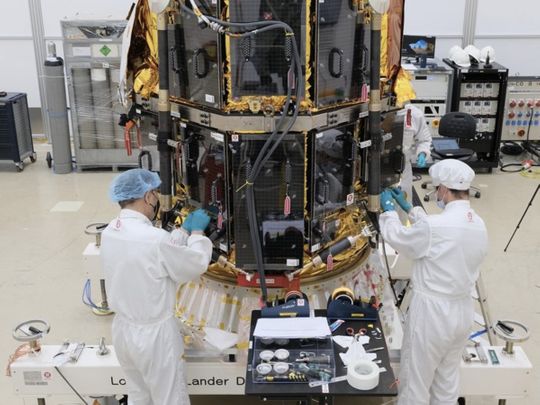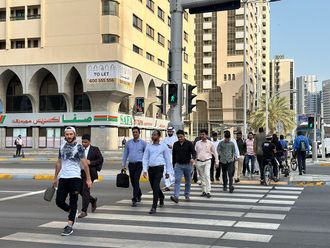
Dubai: The UAE’s mission to reach the moon this year is on track, with the announcement on Wednesday by Japanese lunar exploration company ispace that its lander, Hakuto-R, which will carry the UAE-made Rashid Rover to the lunar surface, has completed its flight model and is ready to be deployed as early as November.
The Emirati lunar rover will be delivered to the lunar surface by Japanese lander Hakuto-R, aboard a SpaceX Falcon 9 rocket that will lift off from Cape Canaveral in Florida, United States, during the launch window between October to December this year.
In a statement sent to Gulf News today, Mohammed bin Rashid Space Centre (MBRSC) said: “We have no announcement yet, but we are looking forward to the launch of Rashid Rover by Q4 [fourth quarter] this year.”
Landing on the Moon
Last month, MBRSC announced: “Rashid Rover’s flight model is now complete and the dream of Arabs landing on the moon will soon become a reality.”
The journey from Earth to the lunar surface will take around three months. Landing on the Moon surface will be provided by Hakuto-R Mission 1, which is being developed by ispace, a private Japanese space company.
Takeshi Hakamada, founder and CEO of ispace, said today: “We have made steady progress assembling the flight model — it is undergoing final testing now — and today I am pleased to share with you that our launch window has been set for as early as this November.”
Rashid’s mission
Rashid Rover is equipped with the latest technologies and innovative devices and it is distinguished by its ability to resist the lunar surface temperature, which drops to as low as minus 173 degrees Celsius, from as high as 127 degrees Celsius, when sunlight hits the Moon’s surface.
It has 3D cameras, advanced motion system, sensors, communication system that are powered by solar panels. There are four cameras that move vertically and horizontally, including two main cameras, a microscope camera, and a thermal imaging camera. Its sensors will analyse the properties of lunar soil, dust, radioactivity, electrical activities, as well as the rocks on the moon surface.
Its advanced motion system is designed to enhance the efficiency of the rover’s movement on the Moon and ability to overcome natural barriers as well as resistance to changing temperatures.
Testing new technologies
Rashid Rover will capture multiple images and send those back to the control room in Dubai, where the ELM team at MBRSC will test new technologies in material science, robotics, mobility, navigation and communications. The findings will then help in the designing of future missions to survive and function in harsh space environment.








